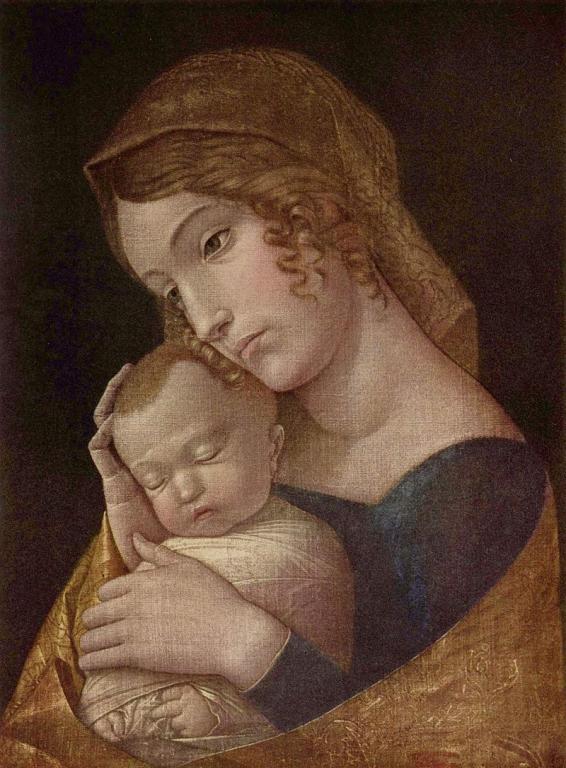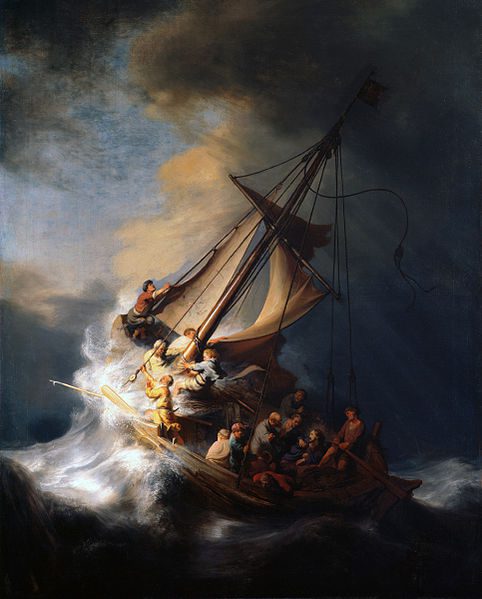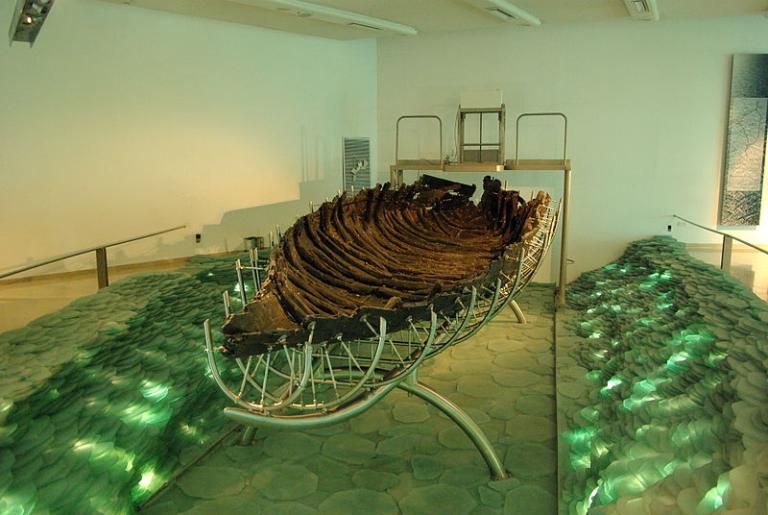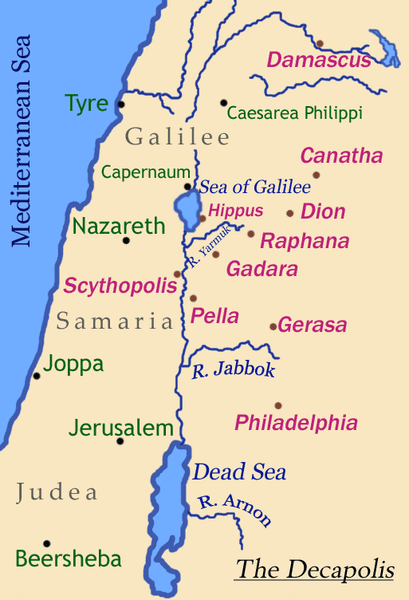
Compare Matthew 12:46-50;Mark 3:31-35; John 15:14
The take-away here, I suppose, isn’t some supposed denigration of his family, or of the family generally, but the indication that Jesus had brothers. (Presumably half-brothers.)
This quite clearly seems to work against the idea of Mary’s perpetual virginity, which has become dogma among Roman Catholics and Eastern Orthodox.
We had a speaker on campus several years back, George Zervos, an Eastern Orthodox priest (I think) who teaches at the University of North Carolina at Wilmington, who showed how the dogma of Mary’s perpetual virginity developed in the early centuries of Christianity. It was fascinating.

The boat is surely somewhat more elaborate than the one Jesus knew, and the storm probably more dramatic.
Compare Matthew 8:18
One of the most memorable stories in the gospels.
“What sort of man is this, that even winds and sea obey him?”
Indeed.
Jesus shows in this episode that he possesses the powers that had once been ascribed to the ancient storm god Ba‘al, who had been such a temptation to the ancient Israelites but was now defunct and essentially forgotten.
Lake Tiberias, Kinnereth, or the Sea of Galilee is prone to storms, for reasons explained here. They may not be quite as spectacular, typically, as that depicted by Rembrandt in the painting above. But then, the boat in which Jesus and his disciples were traveling was almost certainly a more humble thing, too. And, to make things worse, the disciples may have been unable to swim. (Surprisingly, many pre-modern sailors couldn’t.)

(Wikimedia Commons public domain image)
Here and here are amateur videos (each roughly a minute long) of stormy days on the Sea of Galilee, which is normally quite a placid lake.

Did this incident, reported in all three of the synoptic gospels, occur in Gadara, Gerasa, or Gergesa? Were there two demoniacs, or was there only one?
The various accounts of Joseph Smith’s First Vision typically speak of a visitation of the Father and the Son, but one speaks only of an appearance of the Son (which, it’s important to note, isn’t saying that the Father didn’t appear, or that the Son was the only person to appear).
Many of those who attack Joseph’s accounts as contradictory on this point — which, logically speaking, they’re not — are fundamentalist Protestants, who remain serenely unbothered by the variation in the number of angels at Christ’s tomb, and by Gadara/Gergesa/Gerasa, and by the number of the (Gerasene) demoniacs.
On a recent attempt to harmonize the various accounts of the First Vision, by the way, see this.
Incidentally, the area east of the Sea of Galilee and the Jordan was far more Greco-Roman in the time of Christ than it was Jewish. Hence the herd of (Gadarene) swine.











